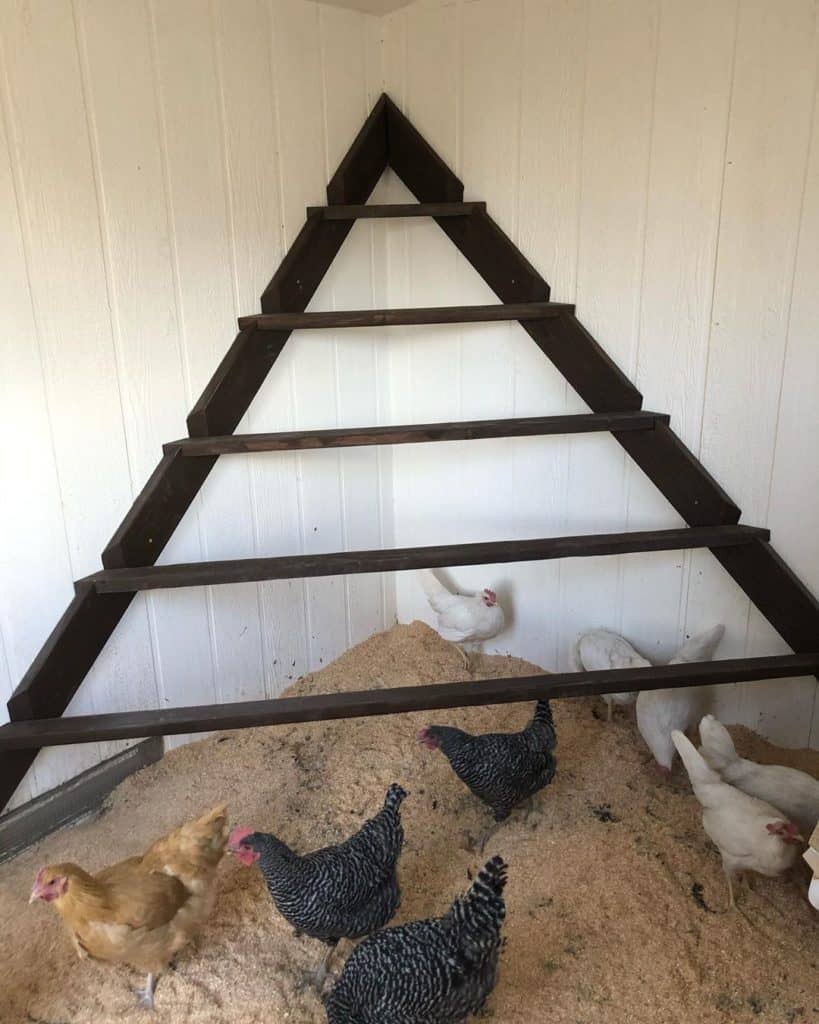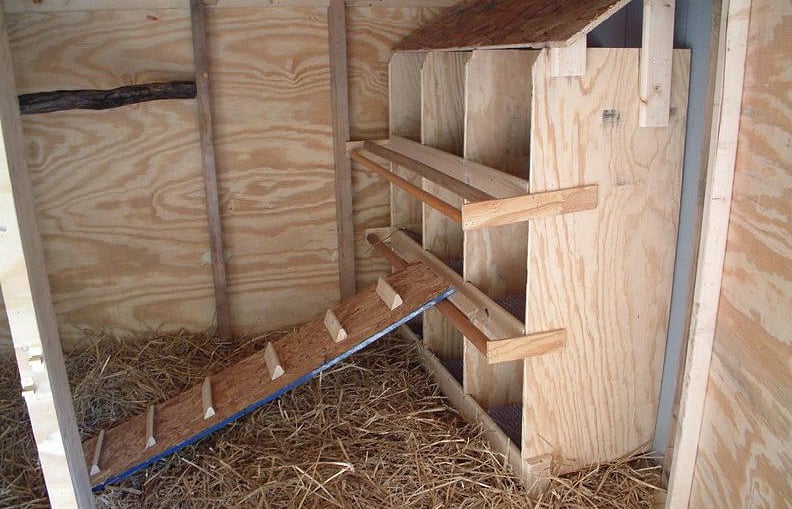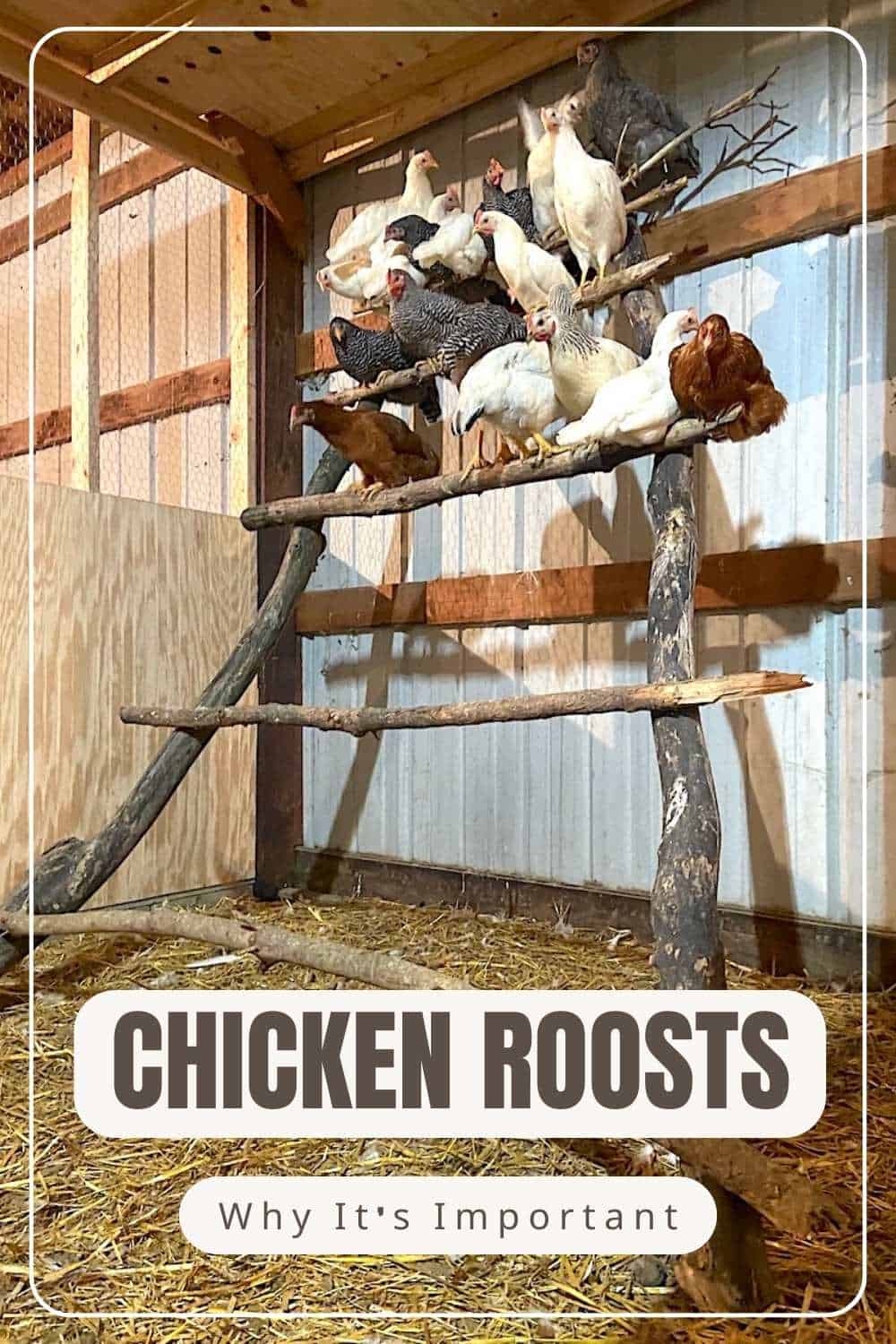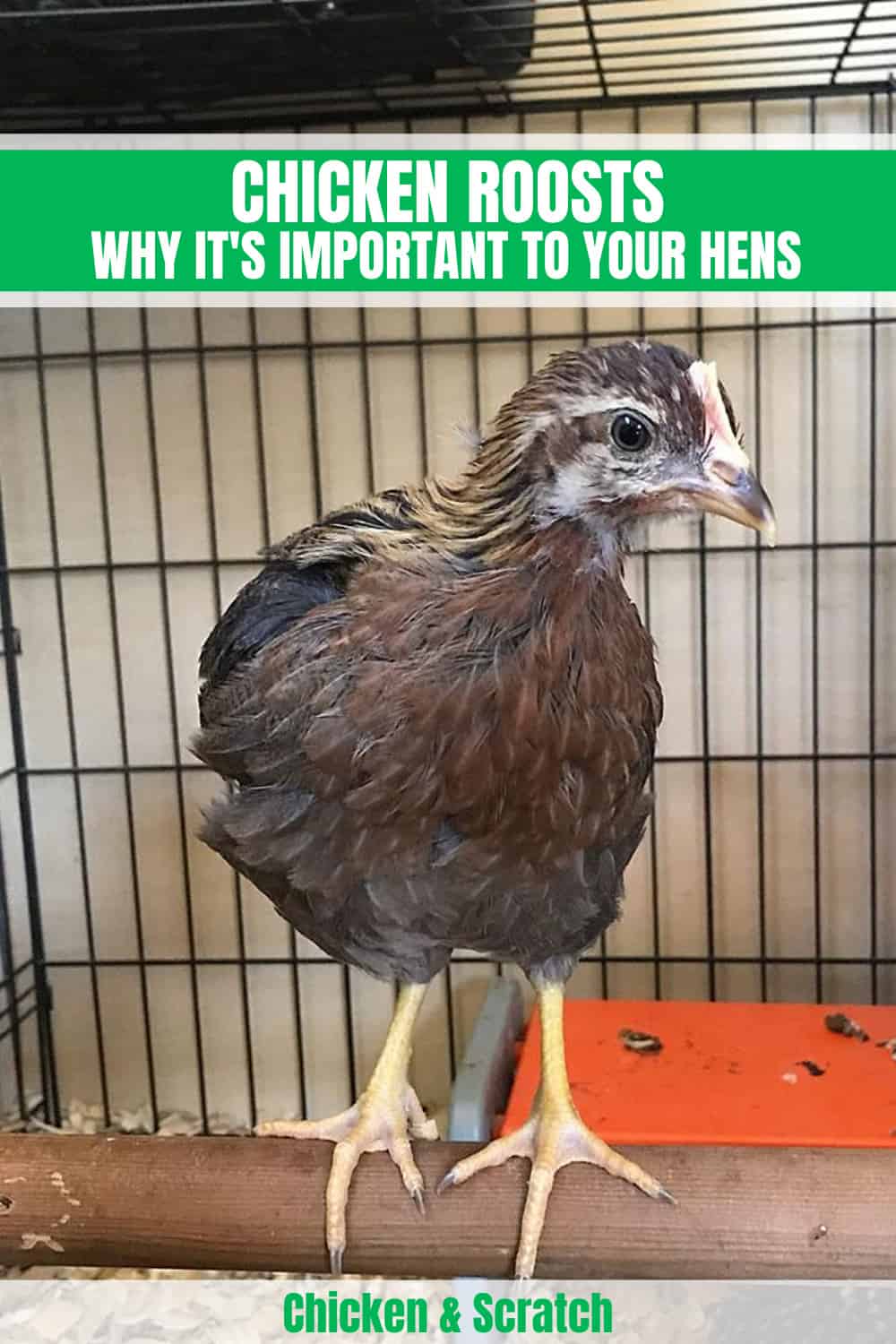A chicken roost is a perch. The word “roost” means to sit or settle or gather.
Choosing the right chicken roosts is incredibly important to the health of your flock!
Chickens are social animals, which means they have an innate genetic need to be together at all times, even during sleep.
Because of their status as a prey species, many chickens have an instinct to perch up high, such as in trees, this is a safer place to sleep to evade potential predators.
Chickens also need a certain type of roosting perch in order to get good sleep. Their roost needs to be comfortable and healthy for their feet.

In summary, the ideal chicken roost should provide your chickens with all of these elements:
- Sufficiently long to accommodate multiple chickens roosting together.
- Sturdy and secure to support the weight of multiple chickens.
- Appropriate width to avoid placing stress on your chickens’ feet.
- It offers ease of access to nesting boxes in the morning.
- Non-slip to prevent injury or infection to your chickens’ feet.
- Mounted high enough to offer a sense of security inside your chicken coop.
- Reasonably easy to access and clean to maintain a sanitary roosting area.
Now that you have a basic working knowledge of what a roost is and the essential design elements, let’s take a closer look at each element of the perfect chicken roost.
Chicken Roosts: Bar Length
The size of your flock and the breed of chicken you are keeping will in part determine how long your chicken roosts need to be.
For most average size adult chickens, plan for about 10 inches of bar space per bird. So if you have six birds in your flock, you will need at least 60 inches (five feet) of roosting bar space for every bird to have a place to roost.
Chicken Roosts: Bar Material

Before you can choose the best bar material for your chicken roosts, it is important to learn about how chickens perch.
Backyard birders often notice that songbirds and garden birds will wrap their toes around their perch to sit.
Chickens don’t sit like this. A chicken will sit on a roosting perch mostly flat-footed, with only the ends of the toes curling around the perch.
Chickens also rest primarily on their keel bone, which is the central bone in a chicken’s body that the flight bones are connected to.
In a research study published in Poultry Science, researchers discovered that chickens that don’t have a proper perch may develop pressure point sores or lesions on their feet and stress fractures in their keel bone.
The best bar material is always going to be natural wood because this is what chickens would roost on in a wild setting. For this reason, it is always nice to use thicker natural branches if you can find them.
However, when using prepared wood, you will need to sand it down to remove splinters and rough areas that could injure your chickens.
For older or arthritic chickens, you may want to wrap a softer material around it, such as some thick rubber, for comfort.
Chicken Roosts: Width

Because chickens roost with flat feet, thinner is not better when it comes to the width of a roosting perch. But then again, too wide can cause problems as well.
For adult chickens of average size, aim for anywhere from two to two and a half inches of flat surface for perching. In an innovative research study, the British Poultry Society found that this is the perch size that was preferred by laying hens.
Slightly rounding the edges of the roosting perch can avoid abrasions and injuries, but you don’t need to create a round perch since your chickens won’t wrap their toes around the perch.
In fact, having a little more width to the perch can also guard against abrasions on the keel bone.
If you want to use natural branches from local trees or sturdy bushes, pick thicker branches that give adequate foot surfaces for roosting.
Chicken Roosts: Slip-Proof
Another reason why natural material is always a better choice for your chickens’ roosting perches is because it offers a more stable grip surface.
Modern plastic perches may be lighter in weight and easier to change out, but they tend to be slippery. Similarly, steel is very sanitary and easy to clean, but it can be extremely slippery and also uncomfortable during heat or cold.
Covering your natural wood perches with a layer of soft rubber, however, can help pullets (adolescent chickens) and elder hens retain a firm grip throughout the night without slipping.
Chicken Roosts: Mounting Height

How high should your chicken roosts be mounted? This will depend in part on the height of your chicken coop as well as the number of chickens you are accommodating.
Ideally, your coop will be at least as tall as you are so you don’t have to stoop to enter.
For your chickens’ comfort and safety, try not to mount the lowest roost any lower than 12 inches off the ground. The lowest roost will typically be occupied by lower-ranking flock members, which may include chicks or pullets. And since chicks and pullets won’t be very experienced at roosting yet, lower roosts are also better for their safety.
For your adult laying hens, however, they will appreciate higher roosts when possible. But you want to choose a height that is appropriate for your breed of chicken. Heavier, bigger chickens won’t be able to easily fly to any roost that is higher than about 18 inches.
For smaller, lighter-weight birds, you can place your roosts higher up – two feet (24 inches) above the floor is ideal.
Chicken Roosts: Location
A research study published in British Poultry Science showed that hens preferred a roosting perch location that is nearer to the laying boxes.
Because most hens lay on a near-daily basis and first thing in the morning, offering a roost that is very near the laying boxes mean hens don’t have far to go to start pushing out their morning eggs.
This is a great video to help you learn from a chicken’s eye view of how they perceive their sleeping and roosting space. It also covers the ideal nesting box location relative to the roosting perches.
Chicken Roosts: Sanitation
Because chickens are a flocking species, they do maintain an internal pecking order.
No matter what size your flock is, the chickens occupying the “alpha” positions within the flock will always get their first choice of roosting positions. The choicest roosting positions are always the most secure and the highest roosts.
A healthy adult chicken may eliminate waste up to 15 times per day, all day and all night.
So if you have a larger flock and you need to install multiple roosting bars, you will need to find a way to stagger them so that birds perched up high won’t eliminate on birds perched lower down.
It will also be important to plan for how you can easily access and clean both the roosts and the ground below. You want to keep these areas very clean to avoid the spread of infection and disease.
Modern best practices suggest staggering the perches in a stair-step pattern and placing some kind of container or material underneath that you can remove to clean off the waste.

Summary
Chickens that have proper roosting perches for sleep and daytime use are much more likely to live longer and produce more eggs for you and your family to enjoy. Sanitary roosting perches will limit the spread of infection or mites that could harm your chickens.
Now you have all the basic information you need to construct proper chicken roosts for your flock to roost in a way that is safe and healthy.


Joseph Hudson has been raising chickens for over 15 years. In 2018, he completed the Agriculture & Natural Resources program at Mt. San Antonio College. He currently raises over 1400 chickens on his 7.5-hectare farm. He keeps sharing his experience on raising healthy and happy chickens on Chicken Scratch The Foundry.







